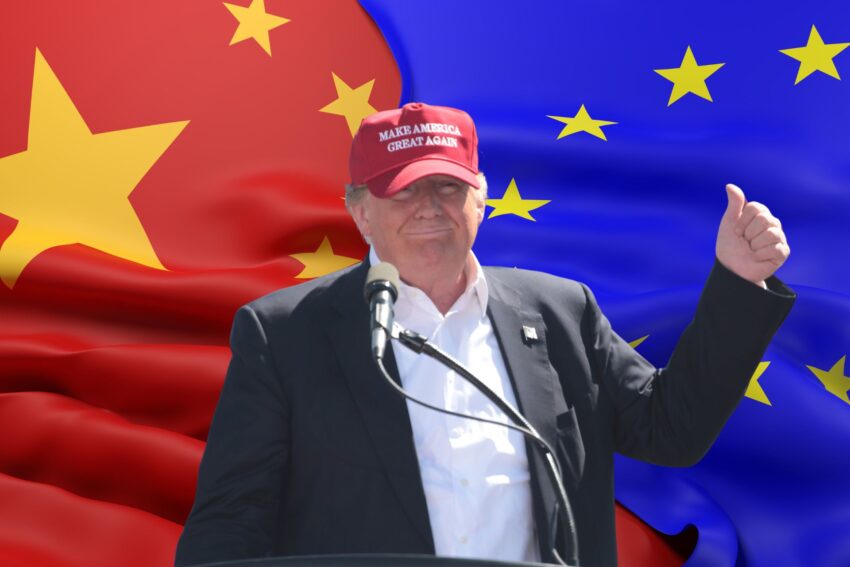In a bold move that’s reshaping global trade dynamics, President Donald Trump has paused tariffs on major trading partners while simultaneously ramping up duties on China. This strategic pivot has already sent ripples through international markets and sparked cautious optimism among U.S. farmers and agricultural stakeholders. Adding to the momentum, the European Union recently dropped its retaliatory tariffs, opening the door to negotiations that could solidify Trump’s plan as a masterstroke for American interests.
Why the Pause—and the Push?
Trump’s decision to ease off tariffs with key allies like Canada, Mexico, and Japan reflects a pragmatic recalibration. These nations, critical to U.S. supply chains and export markets, faced steep duties during Trump’s earlier trade offensives. Now, with geopolitical tensions simmering and domestic industries clamoring for stability, the administration has opted to mend fences—temporarily, at least. Analysts suggest this pause is a carrot dangled before partners willing to negotiate favorable terms with the U.S., particularly on issues like intellectual property and market access.
China, however, remains in the crosshairs. Citing persistent trade imbalances, currency manipulation, and national security concerns tied to tech dominance, Trump has intensified tariffs on Chinese goods, with 125% tariffs on key imports. This escalation aims to pressure Beijing into concessions while boosting domestic manufacturing—a cornerstone of Trump’s “America First” agenda. The contrast is stark: cooperation with allies, confrontation with rivals.
The EU Blinks First
The European Union’s decision to drop its retaliatory tariffs, imposed in response to earlier U.S. steel and aluminum duties, marks a significant win for Trump’s approach. Facing economic headwinds and the prospect of losing access to the lucrative U.S. market, EU leaders have signaled a willingness to talk. Negotiations, already underway as of April 10, 2025, could yield a deal that slashes trade barriers, boosts U.S. exports, and cements Trump’s gamble as a success. If these talks bear fruit, the U.S. could see expanded market share in Europe without the overhang of tit-for-tat tariffs—a clear validation of Trump’s strategy.
Markets React: Agriculture in Focus
Global markets have responded with a mix of volatility and guarded hope. The tariff pause with major partners has steadied investor confidence, particularly in sectors reliant on cross-border trade. Meanwhile, the China escalation has fueled uncertainty, with commodity prices swinging as traders weigh the risks of a prolonged standoff.
Agricultural commodities, a linchpin of the U.S. economy, have felt the impact acutely. Soybeans, corn, and pork—staples of the American heartland—saw sharp declines during Trump’s initial trade war with China, as Beijing slashed imports in retaliation. The renewed pressure on China has rekindled some of that unease, with soybean futures dipping 3% in early April. Yet, the EU’s tariff rollback and the pause with other partners have sparked a counterbalance, with key commodities rising.
Farmers and Farm Groups Weigh In
For America’s farmers, Trump’s tariff maneuvering is a double-edged sword. The Rural Radio Network recently reported on the response from agricultural stakeholders, capturing a blend of relief and resolve. “Farm groups express appreciation for tariff pauses,” the outlet noted, quoting Nebraska Farm Bureau President Mark McHargue: “We’re grateful for the breathing room with our trading partners. It’s a step toward getting our products moving again” (Rural Radio, April 2025). McHargue’s sentiment reflects a broader appreciation for the reprieve from allied tariffs, which had squeezed margins for years.
Yet, the China escalation has tempered enthusiasm. Iowa Soybean Association President Suzanne Shirbroun acknowledged the stakes: “China’s a huge market for us, and these tariffs hurt. But if this forces a better deal, we’re willing to hang tough” (Rural Radio, April 2025). Farm groups, while wary of short-term pain, see potential long-term gains if Trump’s hardball tactics pry open Chinese markets or shift demand to friendlier shores.
Trump’s Plan in Motion
As negotiations with the EU and others progress, Trump’s blueprint is taking shape. By sparing allies while doubling down on China, he’s betting that selective pressure can realign global trade in America’s favor. Early signs—market stabilization, EU concessions, and farm group support—suggest the plan is working, albeit with risks. For U.S. farmers, the outcome hinges on whether new markets offset China’s retreat. If Trump pulls it off, he’ll have turned a trade war into a triumph, with agriculture as a key beneficiary.
For now, the world watches—and the fields of the Midwest wait.


